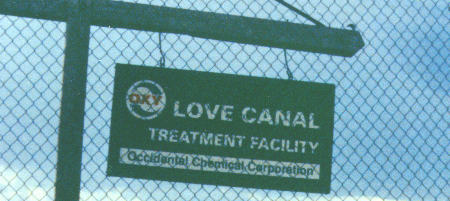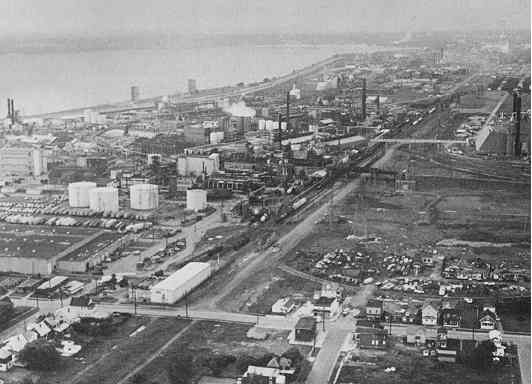Love Canal


Between 1942 through 1953 the Hooker Chemical Company dumped 21,800 tons of waste into an abandoned canal in New York. The canal's construction was halted in the mid 1800's due to a loss of financial backing and so when the Hooker Chemical Company was disposal site, the thick clay walls of the canal seemed to be a perfect place (Ray with Guzzo, 1993). Eventually, the land was covered with more clay and dumping ceased. Unfortunately, the land was slowly developed into a small town, Love Canal. The "impermeable" clay walls of the canal were penetrated and weakened with the building of streets and plumbing. The start of the problems began back in 1953 when the Niagara Falls Board of Education bought the land at the dumping site for one dollar and built an elementary school on top of it. The rest of the town was built around the school and all the buried toxic chemicals. The architect who was hired to build the school questioned the safety of building on the land after finding a pit of chemicals but since he did not know what type of chemicals they were, he just mentioned that they may weaken the foundation of the building (Levine, 1982). The Board of Education ignored this and continued to build.
http://www.iprimus.ca/~spinc/atomcc/history.htm
It wasn't until the mid 1970's that strange problems occurring in the area started to really be reported. As early as the 1950's strong odors were a problem in the area but they were attributed to the chemical companies in town. Other problem also occurred including children and dogs developing skin irritation after spending time in the field around the school as well as rocks that would explode when dropped. Investigations through Hooker chemical into what the company had actually disposed of in the dump failed from 1976-1978. The company said that they mailed letters that were never received and that they lost the samples. Finally, an investigator from the Niagara Gazette took some sludge from a neighbor's sump pump and had it analyzed. The results showed that the sludge was definitely from what the Hooker Chemical Company had disposed of in the ground. (Levine, 1982).
After this first bit of concrete evidence, the Department of Environmental Conservation of New York (DEC) got involved. More investigations and surveys were completed. The statistics of health problems are staggering. More information on these health statistics can be found here.Development of the Superfund Bill
After it had been made clear that Love Canal was a serious health threat, actions were taken to create a program that would fund the clean up of this and similar sites. Chemical companies resisted new legislation which would make them responsible for cleaning up their own wastes. Sponsors of a strong Superfund bill included former vice president Al Gore but after two million dollars in campaign contributions, the chemical companies succeeded in greatly weakening the legislation (Regenstein, 1982).
The original bill created a $1.6 billion fund with no liability placed on the chemical companies for private citizens to sue for property and personal damage due to the dumps or spills. In order to receive any type of damages, an individual would have to go through state courts which would take years. Owners and operators of disposal sites and producers or transporters of hazardous wastes were made liable for up to $50 million in clean up costs (Regenstein, 1982).